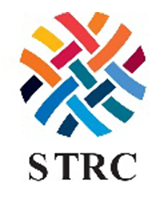Dr. Michael A. Drzewinski, CSO of Nufabrx. More than 85% of adults believe that good health contributes to their definition of overall success, yet 75% of adults fail to maintain their health directions (patient compliance); whether that is applying a cream every few hours or taking their daily pills on time. A smart-textile platform, Nufabrx®, […]
Category: Abstracts
Fundamentals of the washing process: Care and Sustainability in the laundry process
Washing machines are one of the tools that revolutionized peoples’ routines and allowed the lifestyle of a big part of the world’s population. Although the innovative products of a century ago have been optimized over time, the environmental impact of the home laundry process can be responsible for 8% of the total carbon dioxide emissions […]
Driving Innovation With Bio-Responsive Textiles and Ingredient Brands
Lucas Tyson, Hologenix Today’s savvy and eco-conscious consumers are looking to leverage their purchasing power with socially responsible companies, on products that not only align with their values, but do more for them. How does the textile industry keep up with the expectations and logistics of innovating their products and supply chains to meet these […]
The Simplicity of Dyeing with Foam
Howard Malpass, Denim Dyeing Technical Service LLC Experience in dyeing indigo with foam in a cooperative IMD Corporation/Gaston Systems Corporation/Texas Tech University project prompts the desire for exploring the application of other dye classes with foam. Positive commercial results have already been achieved with reactive dyes. Potential for vat and sulfur dyes achieving gains in […]
Breaking It Down: Cotton’s Biodegradation Story
Mary Ankeny, Cotton Incorporated Next time you are walking on a beach and come across macro-plastics such as a discarded plastic bottle or bottle cap, abandoned flip-flop or straw, try to think about all the unseen microplastic litter that is in the water or the sand or in the air. Many of these microplastic particles […]
The New Landscape of Antimicrobial Testing: Changes and Lessons Learned During a Pandemic
Dr. Matthew Hardwick, Resinnova Labs All industries were hit hard by the COVID-19 pandemic; perhaps none more than the textile industry. With orders drying up and retail and manufacturing facilities going dark, those in charge of textile companies had big decisions and, potentially, big changes to make. With the need for widespread masking, many companies […]
Testing and Standards for a Global Textile Industry
Diana Wyman, Executive Vice President, AATCC It’s no secret that we live in a global community and work in a global marketplace. Responding to global challenges like microfiber pollution and e-textile evaluation require new approaches. AATCC is finding new ways to incorporate diverse perspectives from across the textile industry and beyond to develop standard test […]
Advancements in Digital Textile Inks and Chemistry
David Clark, Ink Jet Textiles, Huntsman Textile Effects In this presentation we’ll discuss how ink types and formulas have developed to meet market requirements and to become better suited for digital printing on an industrial scale. We’ll also discuss the basics of pretreatment chemistry and some of the advancements that have been made in this […]
A Novel Approach to Dyeing Using Foam Technology
Tim Heller, Vice President/Plant Manager, JB Martin Presented is a way to dye cotton fabrics without the use of salt or alkali, while at the same time greatly reducing the water usage to less than one kg of water per kg of cotton and in turn reducing energy consumption. This more sustainable process has been […]
Evolution of Chemical Applicators for Textiles – a Historical Review of Chasing Water
Preston Aldridge, Vice President, FTA, Inc. Our industry began in fields out in the open when Man was mostly Nomadic and washers were rivers. With the change to a more stationary lifestyle, the location moved to the yards, porches, kitchens, and laundries of homesteaders. The General Store needed a supply chain thus creating large laundries […]
